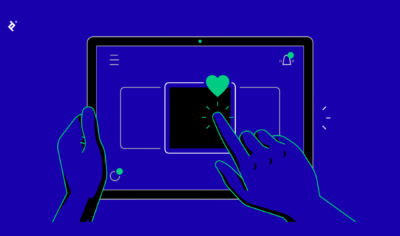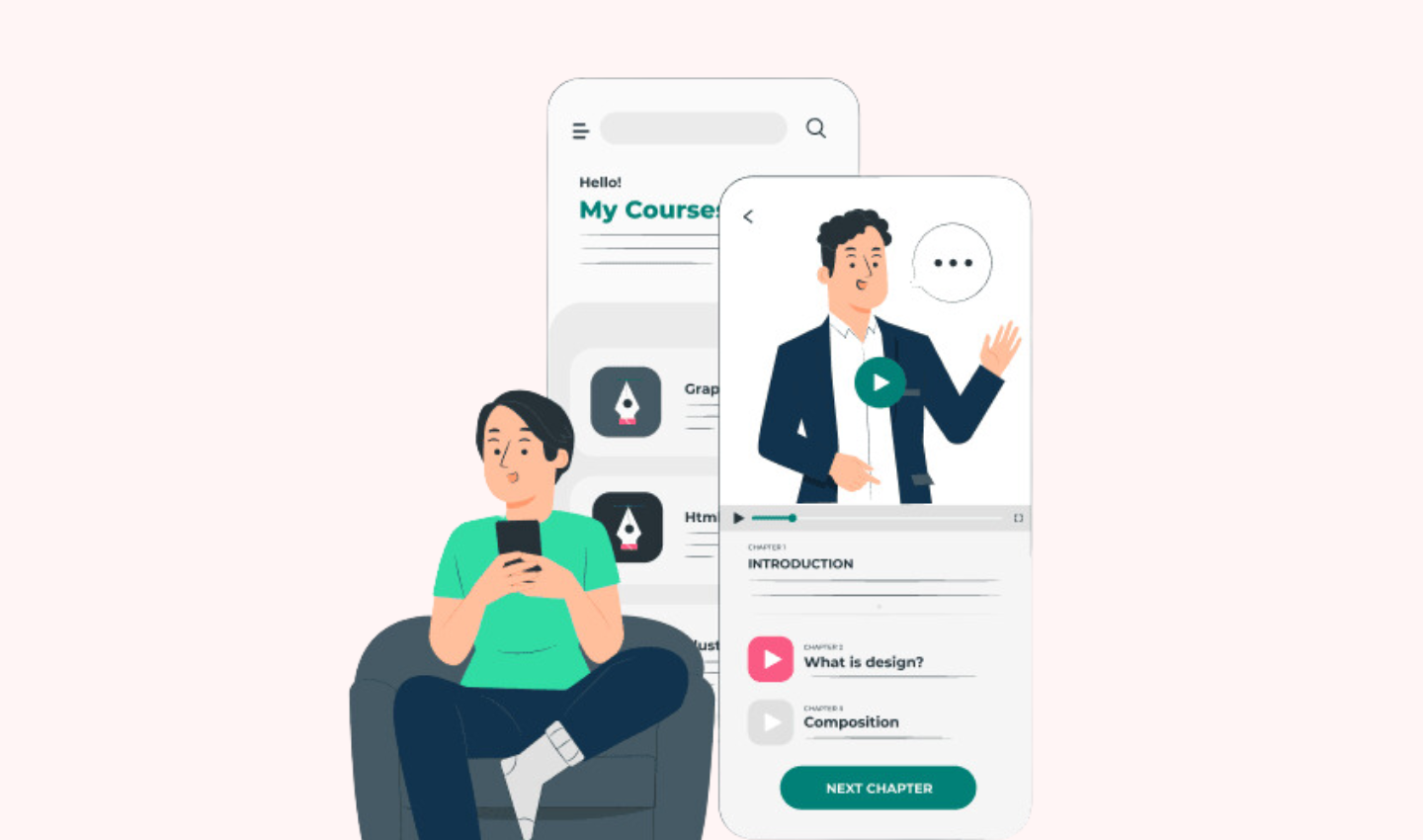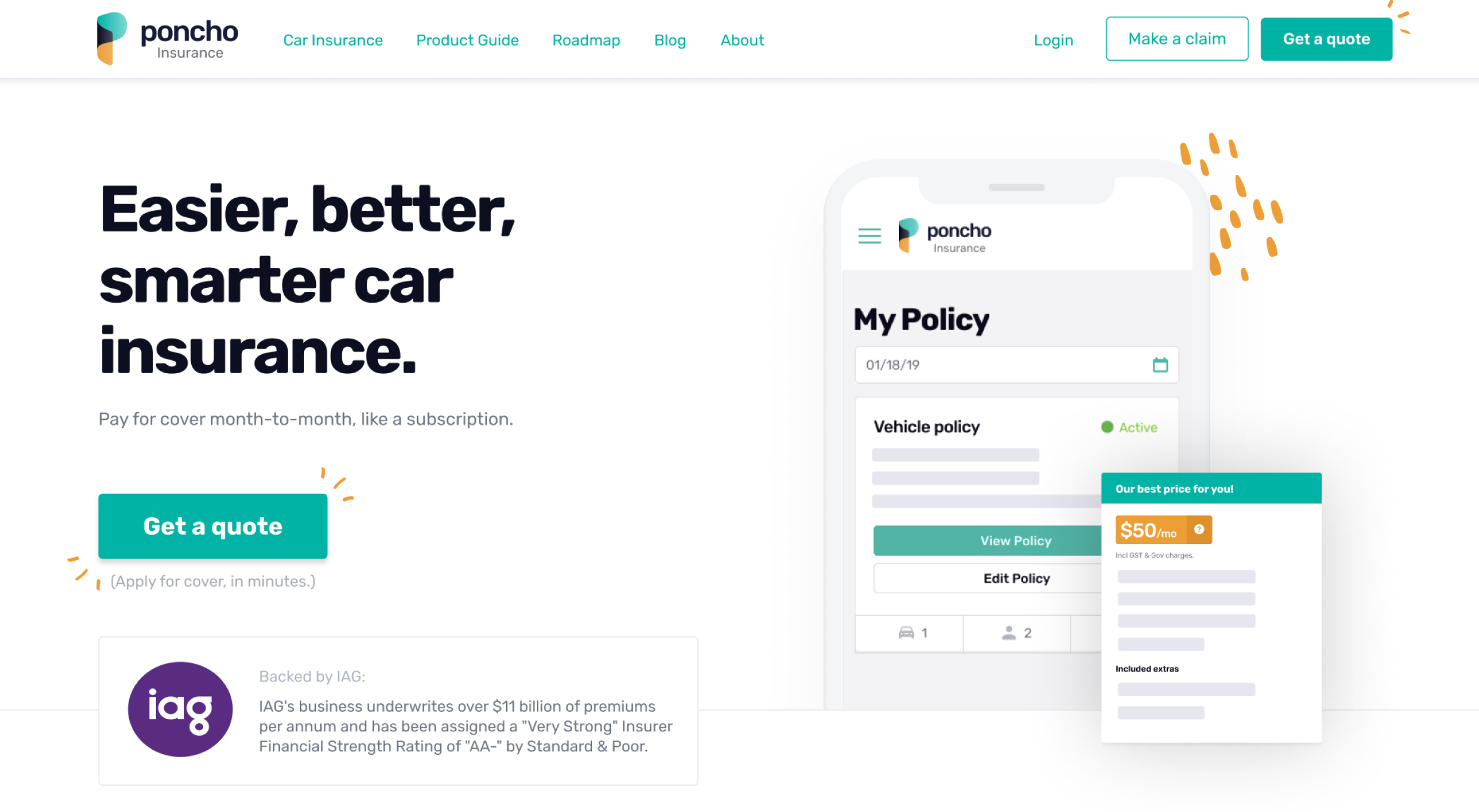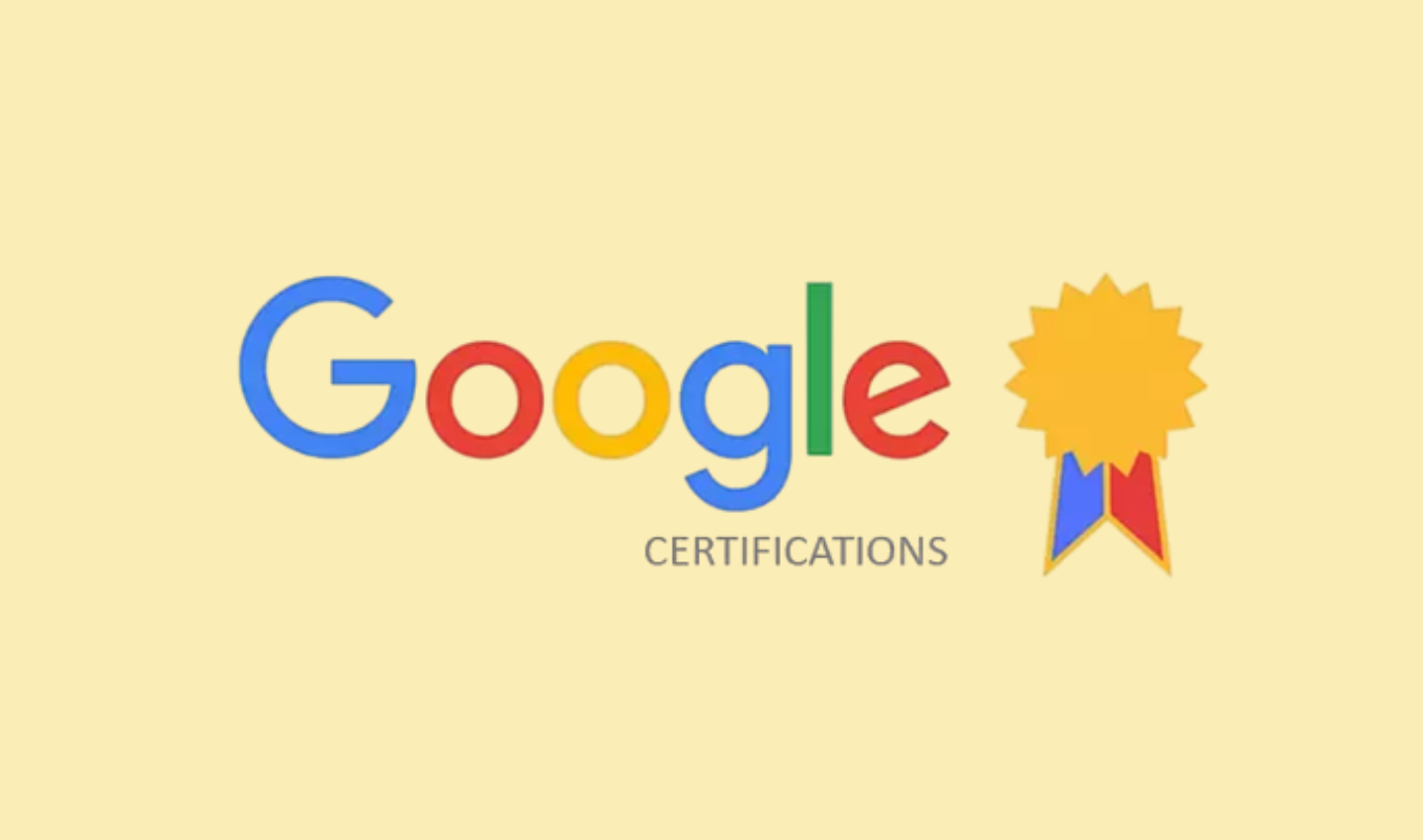
Is the Google UX Design Certificate Still Worth It in 2025?
Imagine opening an app or website, only to be instantly frustrated by confusing navigation or slow load times. We’ve all been there—and it’s experiences like these that highlight the crucial role of UX (User Experience) design in our digital world. In 2025, UX design isn’t just a nice-to-have; it’s essential to the success of nearly every product, from apps and websites to even physical devices. With its practical approach and a Google-backed seal of approval, the Google UX Design Certificate offers a highly accessible path for anyone looking to break into this dynamic field.

Since its launch in 2020, the certificate program has gained widespread attention for its comprehensive curriculum, accessibility, and the backing of a tech giant like Google. But as we enter 2025, with the design landscape continuously evolving, the question arises: is the Google UX Design Certificate still worth pursuing?
This article explores the relevance of the Google UX Design Certificate in 2025, its value for both beginners and experienced designers, how to maximize your learning experience, and the challenges you may encounter along the way.
Table of Contents
The Current Relevance of the Google UX Design Certificate
The Google UX Design Certificate remains a solid foundation for those looking to break into UX design. With more companies recognizing the value of user-centered design, there’s no shortage of opportunities in the UX field. The course continues to be a sought-after entry-level credential for those new to the design world, providing essential skills in user research, wireframing, prototyping, and testing.
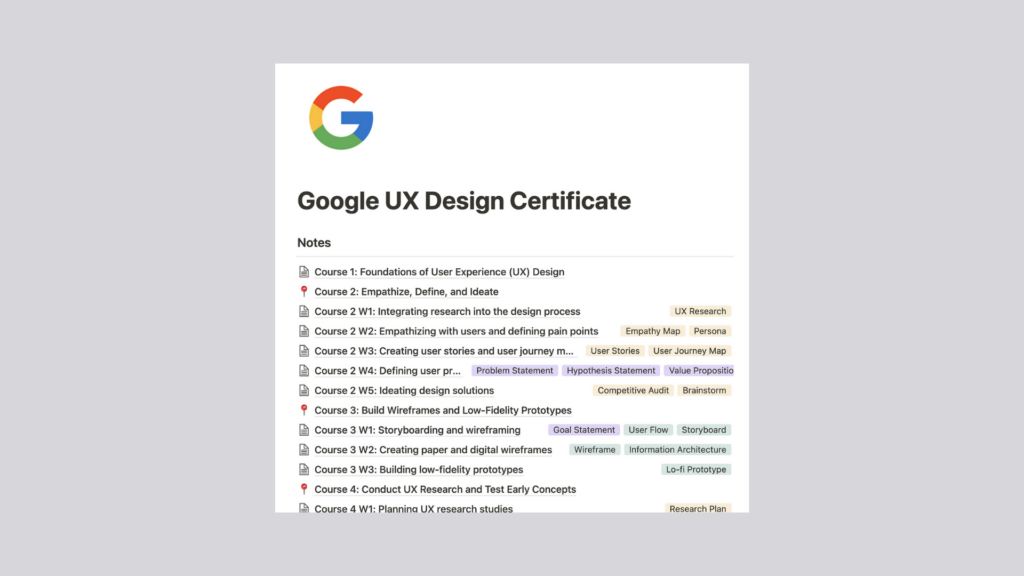
However, in 2025, the certification landscape is more crowded than ever. Numerous other programs are now available, offering a variety of learning formats, from specialized bootcamps to university degrees in UX. As a result, the Google UX Design Certificate is no longer the only viable option. Still, it’s a strong contender for beginners due to its accessibility, affordability, and the fact that it’s backed by Google’s reputation.
Why the Google UX Design Certificate is Still Valuable
Affordability and Accessibility
For those new to the field, it’s a cost-effective and accessible option compared to other more expensive bootcamps or degrees.
Comprehensive Curriculum
The course covers essential UX design topics, including design thinking, wireframing, prototyping, and usability testing—skills that are highly applicable in real-world job settings.
Google’s Brand Recognition
Having a Google-branded certificate adds credibility to your resume, which is particularly beneficial in the early stages of your career.
Flexible Learning Path
The course is designed for self-paced learning, allowing you to balance your studies with work or other commitments. Whether you have a few hours a week or more, you can progress through the material at your own speed.
Hands-On Experience
Through projects and exercises, the Google UX Design Certificate provides a practical, hands-on approach to learning. By completing real-world tasks, you’ll build a portfolio that demonstrates your ability to apply your knowledge, an essential asset for landing your first job in UX design.
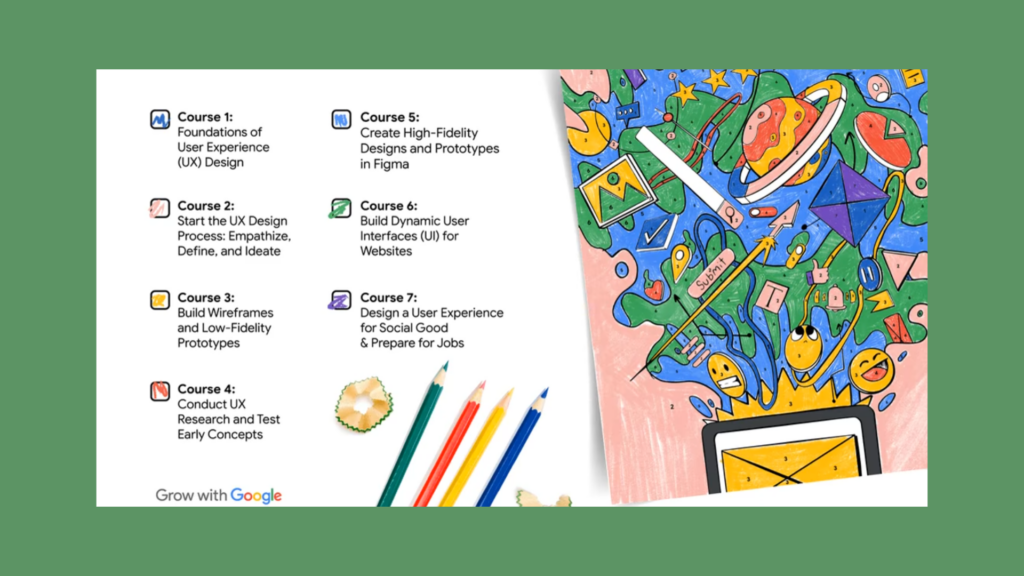
Is it Suitable for Beginners vs. Experienced Designers?
The Google UX Design Certificate is particularly well-suited for beginners who are looking to break into the field or individuals with minimal experience in UX design. The curriculum is structured to build foundational knowledge from the ground up, which makes it an excellent starting point for those unfamiliar with the UX design process. If you’re new to design, you’ll learn essential concepts such as user research, wireframing, prototyping, and testing—all crucial for creating intuitive user experiences. For someone looking to make a career shift into UX or those who have just started exploring the field, this course offers a clear, accessible path to kickstart your learning and gain the necessary skills.
However, for seasoned professionals or designers with some experience in UX, the Google UX Design Certificate might feel too basic. The course focuses primarily on core skills and doesn’t delve deeply into more specialized or advanced topics, such as interaction design, advanced usability testing, or information architecture. If you already have experience in these areas, much of the content might seem repetitive or overly simplistic.
That said, there are still valuable takeaways for experienced designers:
- A Refresher Course: For those who have been away from the field or need a refresher on UX fundamentals, the Google UX Design Certificate can serve as a quick, comprehensive review. It’s a way to ensure that you are up to date on the essential concepts of user-centered design.
- Insights into Google’s Design Philosophy: Google has a strong influence on the UX design world, and the course offers an in-depth look at how Google approaches design challenges. This perspective can be helpful, especially if you plan on working with or within organizations that follow similar design principles.
- An Accessible Way to Learn New Tools: Even if you have a strong design background, you may still benefit from learning Google’s preferred tools, such as Figma or Adobe XD, through the course. If you’re new to these tools, the structured curriculum provides an excellent introduction to them.
For those with more experience, it might be more effective to supplement the Google UX Design Certificate with advanced courses, certifications, or real-world projects to deepen your expertise. You could also focus on mastering specific areas that the Google course touches on more briefly, such as UI design, motion design, or developing a deeper understanding of accessibility in design.
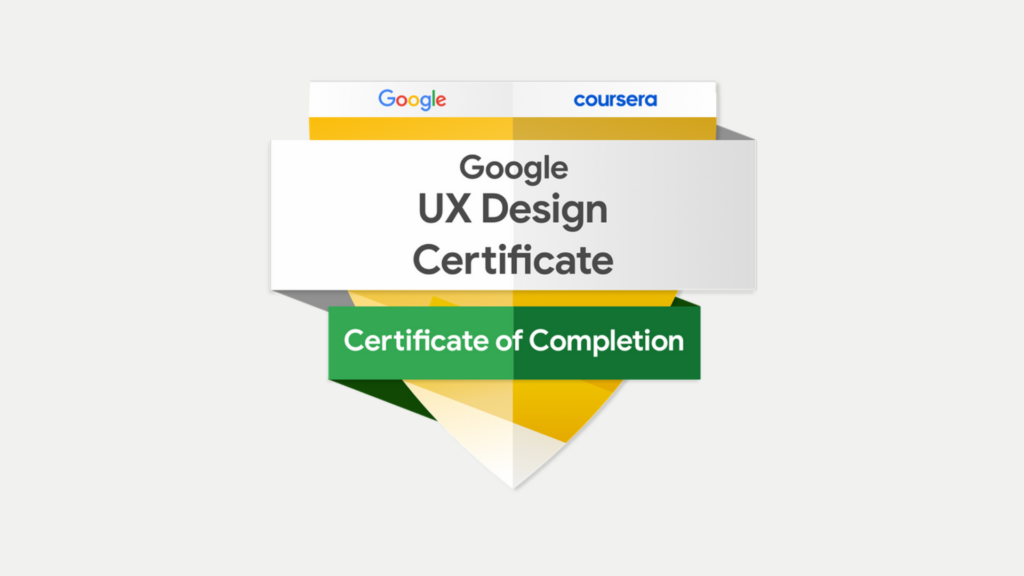
Challenges of the Google UX Design Certificate in 2025
The Google UX Design Certificate offers a solid foundation for beginners, but like any program, it comes with certain limitations that may impact its value, especially as the UX field continues to evolve. Let’s take a closer look at these challenges:
Limitations and Gaps in the Curriculum
1. Lack of Advanced Topics:
The Google UX Design Certificate does a great job of covering the core principles and practices of UX design. However, for those looking to dive deeper into the nuances of specialized areas within UX design, the course falls short. While it touches on essential topics such as wireframing, prototyping, and user research, it doesn’t delve into advanced subjects that are increasingly important in the industry. These include:
- Interaction Design: The intricacies of designing how users interact with digital products, including gestures, animations, and transitions.
- Information Architecture: Structuring complex information systems to ensure users can navigate effortlessly. This is crucial for larger products, such as enterprise-level applications.
- Visual Design: While the course covers basic UI principles, it doesn’t go in-depth into graphic design elements, typography, or color theory, all of which are critical for creating polished, aesthetically pleasing user interfaces.
For learners who aim to specialize in these areas, additional resources or advanced courses will be necessary to supplement the Google UX certificate.
2. Limited Industry Insights:
While the course provides a solid understanding of UX design fundamentals, it doesn’t offer much insight into the day-to-day realities of working within design teams at large organizations. This is an important gap because real-world UX projects often require collaboration with other departments (e.g., developers, product managers) and dealing with organizational challenges, deadlines, and client demands.
Additionally, the course does not fully address the complexities of working in fast-paced, large-scale environments or provide detailed case studies that showcase the diversity of challenges faced by UX designers in real-world settings. For a deeper understanding of these industry nuances, learners may need to turn to blogs, podcasts, or mentorship from experienced professionals.
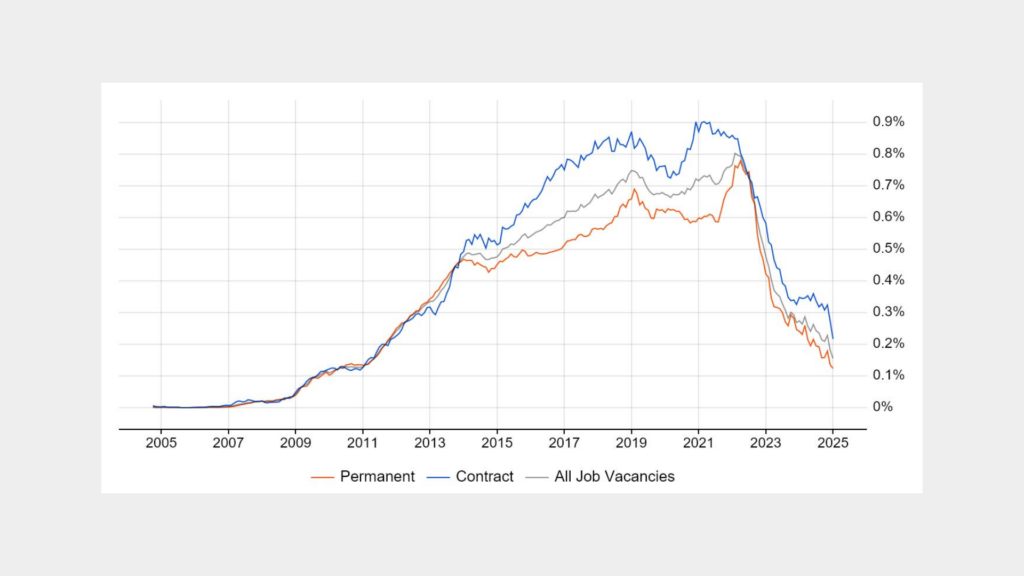
The Changing UX Job Market
The UX job market in 2025 is more competitive than ever. With an increasing number of people entering the field, employers are no longer just looking for basic technical skills in design tools. The demand has shifted towards designers who can balance technical expertise with a keen understanding of business and technology. Here’s why this matters:
1. Employers Seek Versatility:
In today’s market, companies often want designers who are not only skilled in creating user-friendly interfaces but who also understand business strategy, user psychology, and the technical constraints that come with implementing a design. This requires a deeper level of knowledge than what’s covered in the Google UX Design Certificate, which focuses more on foundational design skills rather than bridging the gap between design, technology, and business.
2. Continuous Adaptation Is Key:
UX design is a rapidly evolving field, with new tools, trends, and best practices emerging frequently. The Google UX Design Certificate may get you started, but the real value in the job market comes from demonstrating your ability to adapt and grow. For instance, keeping up with evolving design systems, accessibility standards, and emerging UX methodologies will set you apart from other candidates who may only have basic certification under their belt.
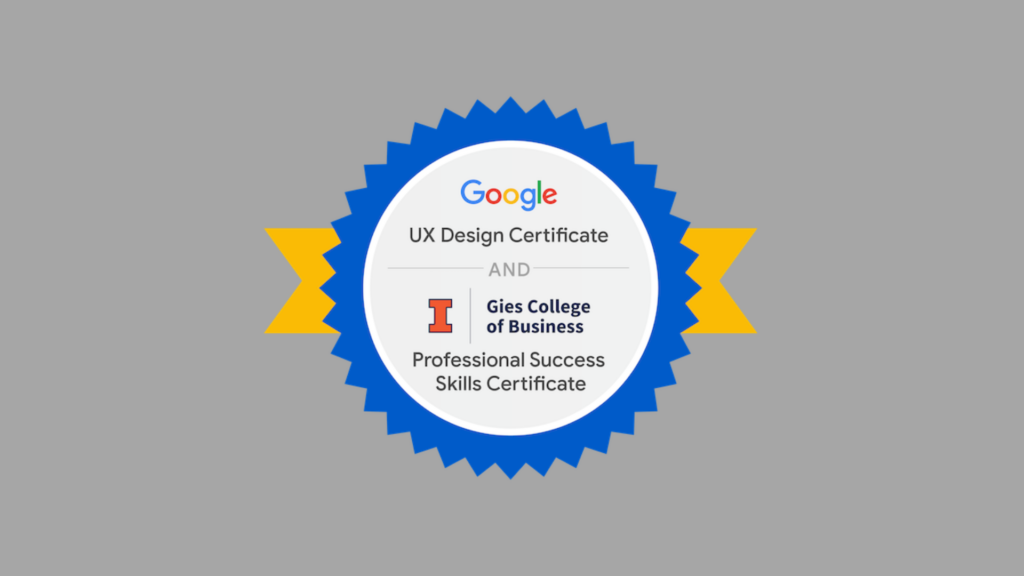
Enhancing the Certificate’s Value
The Google UX Design Certificate is an excellent entry point, but to make the most of it, you’ll need to supplement your learning. Here are a few ways to boost the value of the certificate:
1. Gain Experience Through Internships or Freelancing:
The most important thing you can do after completing the course is to start applying your knowledge in real-world scenarios. Whether through internships, freelance projects, or personal work, hands-on experience is the best way to strengthen your skills and demonstrate your expertise to potential employers. Real-world projects will also allow you to create a diverse portfolio that showcases your ability to solve actual design problems.
2. Learn Additional Tools:
While the course introduces essential design tools like Figma and Adobe XD, the world of UX design is filled with a wide array of software and technologies. Familiarizing yourself with other tools such as Sketch, InVision, or even coding languages like HTML and CSS will increase your versatility as a designer. As the job market evolves, employers may also expect familiarity with design systems, prototyping tools, or collaboration platforms, so gaining expertise in these areas can be a strong differentiator.

The Road to a UX Job: Beyond the Certificate
The Google UX Design Certificate is a great way to get your foot in the door, but it’s just the beginning. To truly succeed and secure a role in UX design, you’ll need to go beyond the certificate itself and invest time in the following:
Leveraging the Certificate to Land a Job
While a Google UX Design Certificate can certainly open doors, securing a job in UX design requires more than just a piece of paper. A well-rounded portfolio is critical to show potential employers that you not only understand the theoretical aspects of UX design but can also apply them in practice.
- Case Studies: One of the most valuable components of a portfolio is your case studies. These show your design process, from identifying user needs to creating and refining design solutions. A strong case study tells the story of a problem you solved, your thought process, and how your design choices were informed by user feedback.
- Diverse Projects: Your portfolio should include a mix of projects that showcase your range as a designer. This might include mobile and web designs, as well as projects for different industries (e.g., e-commerce, education, health tech). The diversity of your work will show that you can tackle various design challenges and adapt to different user needs.
Gaining Real-World Experience
The certificate gives you the skills, but real-world experience is what will help you refine those skills and grow as a designer. Whether through internships, freelance gigs, or your own personal projects, applying what you’ve learned in the Google UX Design Certificate to real-world scenarios will be essential for your development.
Working with clients, meeting deadlines, handling feedback, and collaborating with others will give you the confidence to tackle larger, more complex projects. It will also make you more attractive to employers, who are often looking for candidates with both theoretical knowledge and practical experience.
Networking and Continuous Learning
In the fast-paced world of UX design, learning doesn’t stop once the certificate is earned. Continuing to educate yourself through blogs, podcasts, webinars, and online communities will ensure that you remain at the forefront of the field. It’s also important to network with other designers, attend industry events, and build connections within the UX community. Networking can open doors to job opportunities, collaborations, and valuable insights from experienced professionals.
Final Thoughts
The Google UX Design Certificate remains a valuable starting point for those looking to break into the UX field in 2025. However, to fully capitalize on its potential, you must go beyond the basics and continue to build on your knowledge and experience. The road to a successful UX career requires hands-on practice, real-world experience, and a commitment to continuous learning.
Take your company to the next level and get results with our world class user experience, interface design and implementation.
Get a FREE 30 min Strategy Session
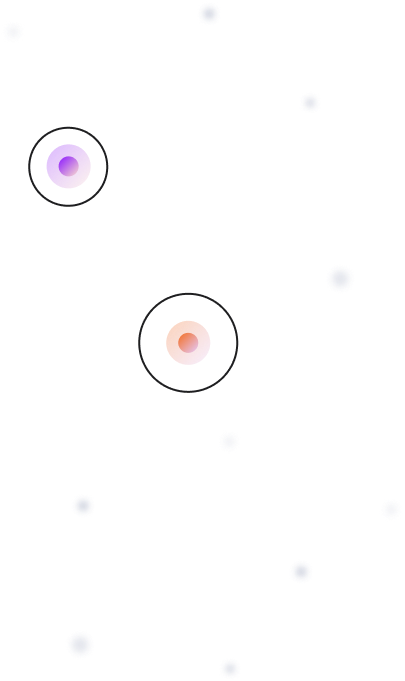
Related posts
The Rise of No-Code in EdTech: How Educators Are Building Interactive Learning Experiences
The Rise of No-Code in EdTech: How Educators Are Building Interactive Learning Experiences Imagine you’re a teacher with a vision: […]
How to use Data to inform your UX Design in 2023
Data analytics is an essential and powerful tool for UX designers, as it helps them make data-driven decisions about the […]
5 Key Learnings from Nintendo’s Success
What can you learn from Nintendo’s success? Yep, Nintendo, the Japanese electronics and video game company that powered your childhood. […]
Creative product design that gets results
Take your company to the next level with world class user experience and interface design.
get a free strategy session
